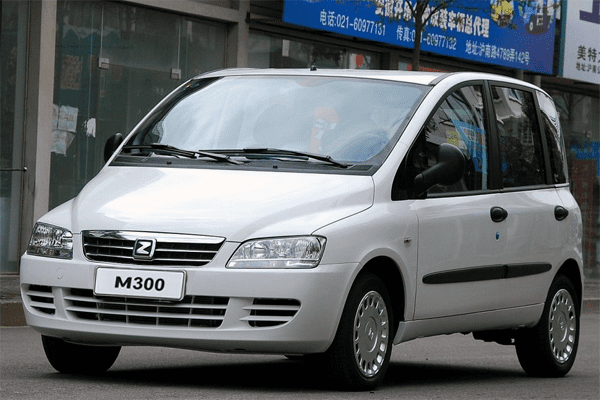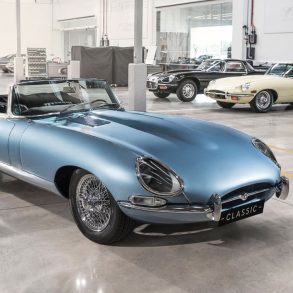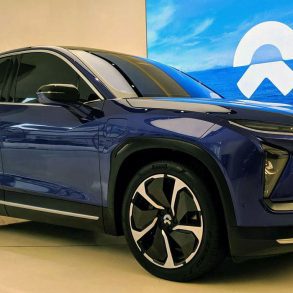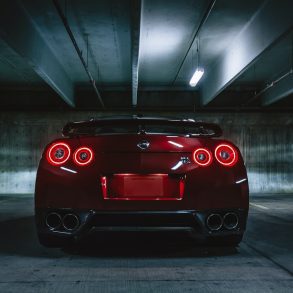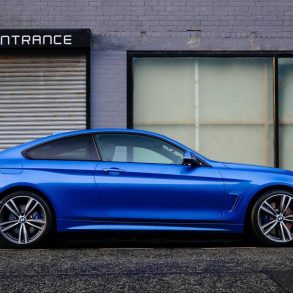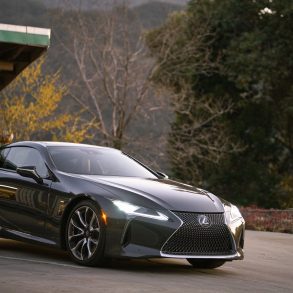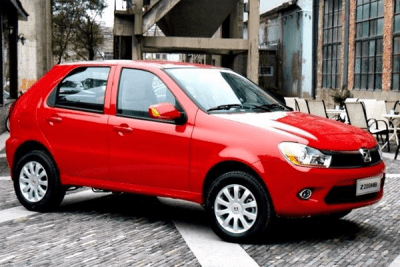 This is our third installment of our series on car models which continued to be produced under a new owner and a new name in China after having been retired from their original market. In part 1 we discussed the Seat Toledo, Seat Ibiza, MG ZT, MG TF, Rover Streetwise and LDV Maxus and in part 2 the Volkswagen Jetta, Audi 100, Daihatsu Move and Austin Maestro/Montego. In part 3 we’ll look at Zotye, a small auto maker based in the Zhejiang province in China that’s presently best known for blatantly copying foreign car designs. But Zotye hasn’t always taken illegal inspiration from Western designs, they started off large scale production by legally acquiring a number of obsolete platforms and designs from Western automakers, some of which never even made it into full production.
This is our third installment of our series on car models which continued to be produced under a new owner and a new name in China after having been retired from their original market. In part 1 we discussed the Seat Toledo, Seat Ibiza, MG ZT, MG TF, Rover Streetwise and LDV Maxus and in part 2 the Volkswagen Jetta, Audi 100, Daihatsu Move and Austin Maestro/Montego. In part 3 we’ll look at Zotye, a small auto maker based in the Zhejiang province in China that’s presently best known for blatantly copying foreign car designs. But Zotye hasn’t always taken illegal inspiration from Western designs, they started off large scale production by legally acquiring a number of obsolete platforms and designs from Western automakers, some of which never even made it into full production.
Suzuki Alto 2nd generation (1984-1988) -> Zotye Jiangnan Alto (1988-2013)
The second generation Suzuki Alto, produced in Japan between 1984 and 1988 has proven to be a true evergreen. After its short first life, production moved to no less than four different manufacturers, two of which still continue to sell the model today. The first one was Maruti, Suzuki’s own branch in India, which has sold the model as the Maruti 800 from 1986 to 2003. In neighboring Pakistan, Suzuki’s local branch Pak Suzuki started production of the Alto in 1988 and still continues to do so today as the Suzuki Mehran.
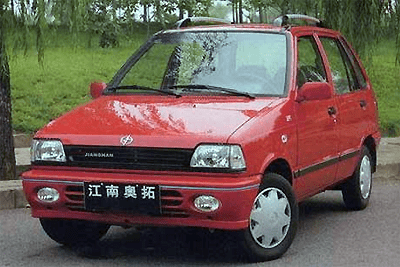 In China, Suzuki licensed production of the Alto to two manufacturers. Changan Auto, Suzuki’s manufacturing Joint Venture partner, produced the Alto from 1988 until 2008 as the Changan SC7080. Simultaneously, Jiangnan Auto produced their own version of the Alto, called the JN Auto. Jiagnan also exported CKD (Complete Knock Down) kits to PSA in Tunisia for local assembly as the Peugeot JN Mini (just over 7.500 assembled until 2003) and to Iran Khodro until 2000 for assembly as the Iran Khodro Alto, to compete with the Saipa Nasim, which was a locally assembled Kia Pride/Mazda 121. Jiangnan was taken over by Zotye in 2009 and the car was renamed Jiangnan Alto or Jiangnan TT. It was marketed at the end of 2010 as the cheapest new car in the world, with a price of 18.800 yuan, or US$ 2,830 at that moment’s exchange rates, close to the price of India’s Tata Nano. Production is said to have ended in 2013, but new registrations are still reported in 2016. Reportedly as a replacement to the TT, Zotye started production of the Z100 in 2013, which is “coincidentally” a carbon copy of the 7th generation Alto, the one produced from 2009. They’ve even made an all-electric version of the car: the Zotye Z100 EV. Zotye doesn’t have the license for this design, as it’s already produced by Changan-Suzuki, but so far they’ve gotten away with it, which unfortunately supports their decision to stop buying licenses and just copy existing designs.
In China, Suzuki licensed production of the Alto to two manufacturers. Changan Auto, Suzuki’s manufacturing Joint Venture partner, produced the Alto from 1988 until 2008 as the Changan SC7080. Simultaneously, Jiangnan Auto produced their own version of the Alto, called the JN Auto. Jiagnan also exported CKD (Complete Knock Down) kits to PSA in Tunisia for local assembly as the Peugeot JN Mini (just over 7.500 assembled until 2003) and to Iran Khodro until 2000 for assembly as the Iran Khodro Alto, to compete with the Saipa Nasim, which was a locally assembled Kia Pride/Mazda 121. Jiangnan was taken over by Zotye in 2009 and the car was renamed Jiangnan Alto or Jiangnan TT. It was marketed at the end of 2010 as the cheapest new car in the world, with a price of 18.800 yuan, or US$ 2,830 at that moment’s exchange rates, close to the price of India’s Tata Nano. Production is said to have ended in 2013, but new registrations are still reported in 2016. Reportedly as a replacement to the TT, Zotye started production of the Z100 in 2013, which is “coincidentally” a carbon copy of the 7th generation Alto, the one produced from 2009. They’ve even made an all-electric version of the car: the Zotye Z100 EV. Zotye doesn’t have the license for this design, as it’s already produced by Changan-Suzuki, but so far they’ve gotten away with it, which unfortunately supports their decision to stop buying licenses and just copy existing designs.
Daihatsu / Toyota Terios I (1997-2005) -> Zotye 2008 Nomad (2007-2010) -> Zotye 5008 (2008-2013) – > Zotye T200 (2014-2015)
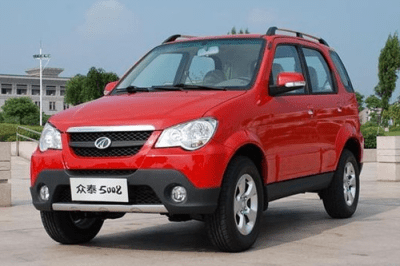 Daihatsu was the first Japanese automaker to set foot in China, making the Charade together with its partner FAW since 1986, as you’ve read about in part 2. In 2003, FAW Huali started production of the Terios small SUV and sold it in Toyota showrooms under the new Dario sub-brand, hoping to sell 10.000 units a year, but the model peaked at just over 6.500 sales in 2004 and quickly plunged thereafter. When FAW terminated all Huali production in 2006 and merged in into its Xiali sub-brand, the Terios was discontinued. Due to a lack of success and profitability from its Chinese operations, Daihatsu pulled out of the market altogether in 2009. It sold the production line and design license of the Xenia and Terios to its partner FAW, who continued production of the Xenia, but didn’t bother with the Terios.
Daihatsu was the first Japanese automaker to set foot in China, making the Charade together with its partner FAW since 1986, as you’ve read about in part 2. In 2003, FAW Huali started production of the Terios small SUV and sold it in Toyota showrooms under the new Dario sub-brand, hoping to sell 10.000 units a year, but the model peaked at just over 6.500 sales in 2004 and quickly plunged thereafter. When FAW terminated all Huali production in 2006 and merged in into its Xiali sub-brand, the Terios was discontinued. Due to a lack of success and profitability from its Chinese operations, Daihatsu pulled out of the market altogether in 2009. It sold the production line and design license of the Xenia and Terios to its partner FAW, who continued production of the Xenia, but didn’t bother with the Terios.
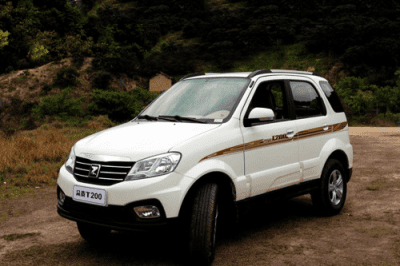 The next part isn’t 100% clear, as sources seem to disagree on how Zotye got their hands on the tooling for the Terios, and if it actually happened legally. Multiple sources claim they got them from Daihatsu via Taiwan, after the Terios had been replaced with a new generation in 2005, but no explanation is given how this may have taken place. A more logical option would be to have gotten them from FAW, but this is not confirmed. Anyway, renewed production of the Terios in Zhejiang started in 2007 under the name Zotye 2008 to celebrate Beijing’s 2008 Olympics. It was powered by 1.3 or 1.5 liter Mitsubishi engines. An upgraded version was launched late the next year as the Zotye 5008, and it was replaced by a facelifted version in 2014 named Zotye T200 to fit within Zotye’s new naming system of “Z” names for sedans and “T” names for SUVs. The brand also developed an all-electric version of the 5008 and T200, but didn’t sell more than a handful of them. The 5008 has been exported under the name Zotye Nomad (later Zotye Hunter), mostly to South Africa and several South American markets. In India, Premier Automotive sells a version with a Peugeot diesel engine under the name Premier Rio.
The next part isn’t 100% clear, as sources seem to disagree on how Zotye got their hands on the tooling for the Terios, and if it actually happened legally. Multiple sources claim they got them from Daihatsu via Taiwan, after the Terios had been replaced with a new generation in 2005, but no explanation is given how this may have taken place. A more logical option would be to have gotten them from FAW, but this is not confirmed. Anyway, renewed production of the Terios in Zhejiang started in 2007 under the name Zotye 2008 to celebrate Beijing’s 2008 Olympics. It was powered by 1.3 or 1.5 liter Mitsubishi engines. An upgraded version was launched late the next year as the Zotye 5008, and it was replaced by a facelifted version in 2014 named Zotye T200 to fit within Zotye’s new naming system of “Z” names for sedans and “T” names for SUVs. The brand also developed an all-electric version of the 5008 and T200, but didn’t sell more than a handful of them. The 5008 has been exported under the name Zotye Nomad (later Zotye Hunter), mostly to South Africa and several South American markets. In India, Premier Automotive sells a version with a Peugeot diesel engine under the name Premier Rio.
Fiat Siena and Palio (1996-2007) -> Zotye Z200 and Z200HB (2011-2014)
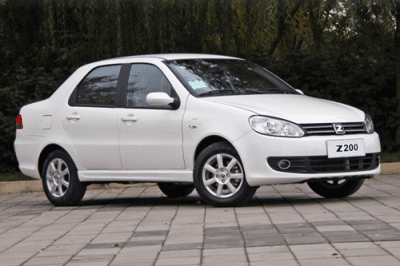 Besides Suzuki and Daihatsu, Zoyte has bought quite a few licenses from Fiat, starting with the Palio and Siena. From 1999 to 2007 Fiat had a production Joint Venture with Nanjing Auto, which you may remember from the acquisition of MG Rover assets after that company’s bankruptcy and from the Seat Ibiza in Part 1 of our series. Production of the Palio hatchback began in 2001, followed by the Siena sedan, Palio Weekend station wagon and in 2006 the Perla sedan. Nanjing was bought by SAIC Motor in 2007, which was not interested in the Fiat products so the JV was terminated. Fiat then sold the production lines and the license to produce the Palio hatchback and the Siena to Zotye in 2008. Zotye started production of the two models with Mitsubishi engines in 2001, originally planning the names Langjun (sedan) and Langjie (hatchback), but changed that to Z200 and Z200HB upon introduction, fitting with its then-new naming strategy. However, as if Zotye has an obsessive addiction to copying, even though they had a license to produce the Siena, they just couldn’t resist changing the nose of the Z200 to a resemble the VW Golf VI. The Z200HB fortunately had an original nose. Production lasted just 2,5 years for the hatchback and 3 years for the sedan, as the cars weren’t very successful. The larger and only slightly more expensive Z300 sold as many cars in its first half year of sales than the two Fiat-based models during their entire life cycle under the Zotye brand. Unsurprisingly, the Z300 was yet another stolen design by Zotye, this time they copied the Japan-only Toyota Allion.
Besides Suzuki and Daihatsu, Zoyte has bought quite a few licenses from Fiat, starting with the Palio and Siena. From 1999 to 2007 Fiat had a production Joint Venture with Nanjing Auto, which you may remember from the acquisition of MG Rover assets after that company’s bankruptcy and from the Seat Ibiza in Part 1 of our series. Production of the Palio hatchback began in 2001, followed by the Siena sedan, Palio Weekend station wagon and in 2006 the Perla sedan. Nanjing was bought by SAIC Motor in 2007, which was not interested in the Fiat products so the JV was terminated. Fiat then sold the production lines and the license to produce the Palio hatchback and the Siena to Zotye in 2008. Zotye started production of the two models with Mitsubishi engines in 2001, originally planning the names Langjun (sedan) and Langjie (hatchback), but changed that to Z200 and Z200HB upon introduction, fitting with its then-new naming strategy. However, as if Zotye has an obsessive addiction to copying, even though they had a license to produce the Siena, they just couldn’t resist changing the nose of the Z200 to a resemble the VW Golf VI. The Z200HB fortunately had an original nose. Production lasted just 2,5 years for the hatchback and 3 years for the sedan, as the cars weren’t very successful. The larger and only slightly more expensive Z300 sold as many cars in its first half year of sales than the two Fiat-based models during their entire life cycle under the Zotye brand. Unsurprisingly, the Z300 was yet another stolen design by Zotye, this time they copied the Japan-only Toyota Allion.
Fiat returned to the Chinese car market in 2012 when it teamed up with Guangzhou Auto (GAC) to produce the Viaggio sedan and later the Ottimo hatchback, but still remains unsuccessful.
Fiat Multipla II (2004-2010) -> Zotye M300 Langyue (2010-2013)
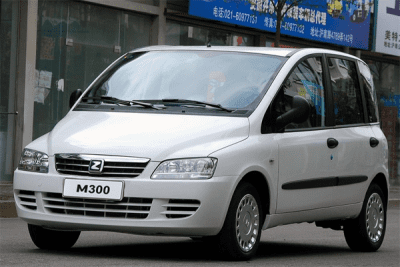 When Zotye bought the production line and the license to produce the Palio and Siena in 2007, they also struck a deal with Fiat to assemble the facelift version of the Multipla 6-seater MPV in China using CKD kits from Italy, under the name Multiplan. The facelift version was less odd-looking but also less characteristic than the first version. When Fiat stopped producing the Multipla, they shipped the entire production line to Changsha, Hunan province in China where Zotye continued production under the name Zotye Langyue (phonetically Longview), using local parts which enabled them to cut the price in half. They originally planned to use Mitsubishi engines (again), but settled for the same 1.6 liter Fiat engine that was fitted originally. They later renamed its Zotye M300 to fit into the brand’s new naming system. Strangely, Zotye also offered a 2+3 seat version, dropping the front-row center seat, one of the Unique Selling Points of the model. The Multipla never was a great success in Europe, despite winning Top Gear’s Family Car of the Year award four years in a row, and neither was the M300 Langyue in China. The M300 Langyue sold just 25.000 units in China before being dropped in 2013.
When Zotye bought the production line and the license to produce the Palio and Siena in 2007, they also struck a deal with Fiat to assemble the facelift version of the Multipla 6-seater MPV in China using CKD kits from Italy, under the name Multiplan. The facelift version was less odd-looking but also less characteristic than the first version. When Fiat stopped producing the Multipla, they shipped the entire production line to Changsha, Hunan province in China where Zotye continued production under the name Zotye Langyue (phonetically Longview), using local parts which enabled them to cut the price in half. They originally planned to use Mitsubishi engines (again), but settled for the same 1.6 liter Fiat engine that was fitted originally. They later renamed its Zotye M300 to fit into the brand’s new naming system. Strangely, Zotye also offered a 2+3 seat version, dropping the front-row center seat, one of the Unique Selling Points of the model. The Multipla never was a great success in Europe, despite winning Top Gear’s Family Car of the Year award four years in a row, and neither was the M300 Langyue in China. The M300 Langyue sold just 25.000 units in China before being dropped in 2013.
Lancia Lybra (1998-2005) -> Zotye
At the same time Zotye struck the former deals with Fiat, they also bought the license and production line for the Lancia Lybra, the unsuccessful Alfa Romeo 156-based midsized sedan (and station wagon) of which Italian production had ended in 2005. Zotye had planned to reveal their version of the Lybra at the Beijing Auto Show in 2008. Spy shots of the car testing in China revealed nothing of the exterior and interior design would change, except for the badges. For unknown reasons, the car never made it into production, and didn’t even make it to the auto show. After this, we’ve never heard again about Zotye’s plans with the car, nor do we know what happened with the production line. We can only guess it’s still collecting dust somewhere in Changsa.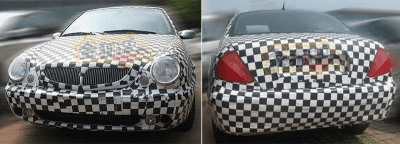
This was part 3, continue with part 4 about the Jeep Cherokee, Nissan X-Trail, Hyundai Santa Fe, Mitsubishi Pajero and Pajero Pinin, and the Saab 9-3.

